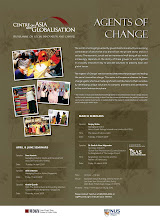
CAG Research Fellow Benjamin Sovacool has just returned from Laos and Cambodia, where he met with local officials, businesspersons, and activists to discuss electrification and energy development in the Mekong Delta.
Here are a few insights from his trip:
● The people of Laos and Cambodia, while culturally rich, are economically poor. More than half of the population of both countries lives on less than one U.S. dollar per day, and a majority of people in both countries lack any sort of regular access to electricity. Indeed, while Benjamin was in Phnom Penh he experienced two power outages in less than twenty-four hours. (see first photo of rural villagers fishing in the Mekong)
● Because of this striking poverty, Laos and Cambodia have both embarked upon ambitious plans to develop massive hydroelectric projects on the rivers flowing throughout the two countries. The Laos Department of Energy Promotion and Development Ministry of Energy and Mines, for example, reports that Thai, Cambodian, and Laotian developers intend to construct no less than twenty differently sized hydro projects in the region. (See second image of Laotian map of dams)
● Unfortunately, their plans for electrification and development, while they could definitely help local villagers and farmers, could also induce grave consequences on the natural environment. Large-scale dams, such as those that have been proposed in the Mekong Delta, consistently fragment riparian ecosystems, destroy habitats, shift sedimentation flows, and degrade local fisheries. The environmental consequences of continuing to build large dams along the Mekong remind us about the tenuous balance policymakers and regulators must face with pursuing economic growth on the one hand, and preserving the environment on the other. [Ben]










No comments:
Post a Comment